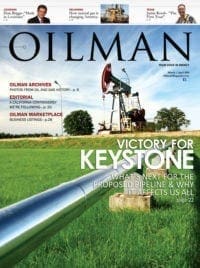2013 brought about many encouraging announcements for the Louisiana oil and gas industry. While the southern portion of our state is facing hundreds of lawsuits with thousands of defendants, good news is still to be had.
The Haynesville Shale experienced an uptick from 12 rigs running in 2012, to this year seeing as many as 42 rigs running. This rise in the rig count was due to natural gas prices moving from historic lows of $1.81 per MCF in 2012, to climbing into the $4.00 range for 2013. While the current price is not high enough to bring a significant amount of rigs back into the Haynesville, the price is stable enough to keep the rig count in the 30’s.
Another play in South Louisiana is the Tuscaloosa Marine Shale (TMS), a crude oil play, which touches parishes from Avoyelles to Tangipahoa. While the TMS is not taking off as quickly as the Hayesville Shale did in 2008, with the correct technology, it could be a viable play for our state and nation in the near future. TMS wells are deeper, have higher temperatures and higher pressures than those wells in the Haynesville Shale. With these higher depths, temps and pressures, come higher price tags on drilling a single well. Goodrich Petroleum and Comstock Resources have both placed large amounts of resources and dollars into the potential of the TMS. It is always an encouraging sign when large players like the two mentioned above place such hope in a specific play.
The best news of all for the state of Louisiana has been the economic development announcements made of nearly 100 billion dollars in the manufacturing arena. Several petrochemical companies from around the world have committed to open new facilities in Louisiana thanks to the abundant, clean, natural gas that comes from right here in Louisiana’s own backyard. Natural gas is the feedstock to the petrochemical industry as flour is to the baker.
Many different types of plants are being constructed as we speak. Cheniere Energy is building a liquefied natural gas (LNG) facility, to the tune of 11 billion dollars, which will export LNG around the world. Sasol will be constructing a gas-to-liquids (GTL) plant, that will cost around 21 billion dollars to construct, that will provide products ranging from transportation fuels, paint and medical lasers to perfumes and detergents. Again, these two aforementioned plants are only two examples of the types of multi-billion dollars economic commitments that have been made to Louisiana thanks to our abundance of natural gas.
While the sky seems to be falling down on the South Louisiana oil and gas industry thanks to the hundreds of lawsuits that have been waged against our companies, good news is still available. If Louisiana is to have a stable economy, then a trained workforce, stable natural resource prices and a non-litigious business climate must all be present and working in unison. As we look forward to 2014, Louisiana will continue to be a major international player for the natural resource and petrochemical market. Whether it is natural gas to power a manufacturing facility, crude oil that will make its way to our vehicles, or plastics that we use in our everyday lives, a “Made in Louisiana” sticker can be found.
Don Briggs is the President of the Louisiana Oil and Gas Association. The Louisiana Oil & Gas Association (known before 2006 as LIOGA) was organized in 1992 to represent the Independent and service sectors of the oil and gas industry in Louisiana; this representation includes exploration, production and oilfield services. Our primary goal is to provide our industry with a working environment that will enhance the industry. LOGA services its membership by creating incentives for Louisiana’s oil & gas industry, warding off tax increases, changing existing burdensome regulations, and educating the public and government of the importance of the oil and gas industry in the state of Louisiana.







